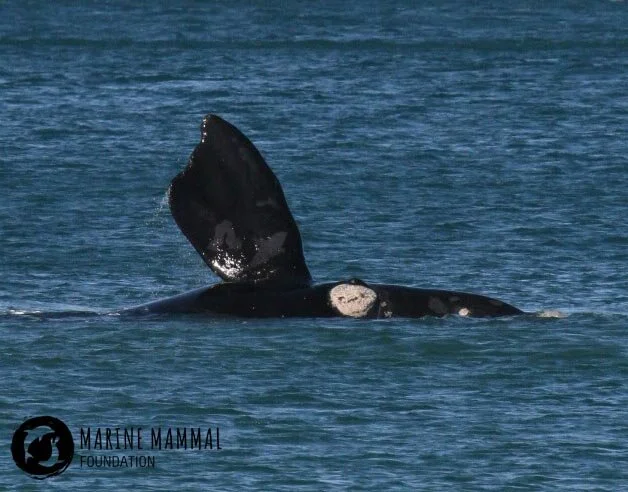
Cetacean Biodiversity Assessment
37% of all marine mammals are at risk of extinction, with 25% of marine mammal species listed as ‘threatened’. Whales and dolphins in the southern ocean face many threats that potentially impact their long-term survival; including habitat degradation, anthropogenic activities, over-exploitation of prey species, oceanic and environmental changes. In addition, the loss of top apex predators, such as cetaceans, has the potential to seriously impact lower trophic levels and important ecosystem functions.
Victoria, Australia, is part of the South East Australian Marine Region, which is known for its biodiversity and endemism worldwide. However, there is a distinct lack of knowledge about what cetaceans (whales and dolphins) reside in Victorian waters, making it especially difficult to assess potential food-web and ecosystems impacts. Recently, unexpected or rarely-observed species in this region have been recorded, including the pigmy sperm whale (Kogia breviceps), rough-toothed dolphin (Steno bredanensis), shepherd’s beaked whale (Tasmacetus shepherdi) and striped dolphin (Stenella coeruleoalba).
Understanding marine mammal assemblages is becoming increasingly important, as our knowledge of the intrinsic value these taxa have on the structure and function of ecosystems globally continues to expand. As a whole, marine mammals fill a broad range of ecological niches, ranging greatly in size, habitat, and feeding at a variety of trophic levels, as primary consumers to apex predators. Some are migratory and can be found in almost all oceans and seas throughout the world, whilst others are restricted to the continental shelf or have resident populations with geographically distinct distributions.
In order to comprehend the role that this diverse group play in an ecosystem, we must first understand the biodiversity, temporal and spatial incidence. Whilst dedicated surveys provide the most in-depth information on species presence and abundance, it has been found that demographic, genetic and diversity information can be obtained from stranding records, as long as the area is large and records are kept over long periods of time (Meager & Sumpton 2015). For data deficient species such as beaked whales, strandings provide the primary data source for information (Lloyd and Ross, 2015). Standings being beach-cast animals, dead or alive, and sightings include at-sea observations of whales, dolphins, or seals/sea lions, as well as haul-outs for seals/sea lions.
This research will provide a comprehensive biodiversity assessment, greatly extending our knowledge of cetacean species in southern Australian waters, potentially identifying rare, unique or endangered species. This project is crucial for correct management and conservation, not only of cetacean species but also the ecosystem in which they reside.
The sighting and stranding records of Victoria have historically been stored in numerous databases within various organisations. With a lack of compiled data, our ability to understand, measure, monitor or predict changes to marine mammal composition, now and into the future, is very much limited. In this study, we aim to extend our knowledge of marine mammal biodiversity within Victoria, collating historical to current marine mammal records for the region, and assess the temporal and spatial patterns and trends.
This project is done in affiliation with Museums Victoria, DELWP and MMF.
Aims:
Collate the strandings records in Victoria to assess the biodiversity of marine mammals
Assess temporal and spatial trends in marine mammal stranding in Victoria to look for patterns in space and time.
If you would like to help us get on the water and continue to conduct our research, consider a donation! As a small not-for-profit organisation, every little bit goes a long way.
PUBLICATIONS
Foord C.S., Rowe K.M.C. and Robb K. (2019) Cetacean biodiversity, spatial and temporal trends based on stranding records (1920-2016), Victoria, Australia. PLoS ONE https://doi.org/10.1371/journal.pone.0223712
Abstract:
Cetacean stranding records can provide vital information on species richness and diversity through space and time. Here we collate stranding records from Victoria, Australia and assess them for temporal, spatial and demographic trends. Between 1920 and 2016, 424 stranding events involving 907 individuals were recorded across 31 Cetacea species from seven families, including five new species records for the state. Seven of these events were mass strandings, and six mother and calf strandings were recorded. Importantly, 48% of the species recorded are recognised as data deficient on the IUCN Red List. The most commonly recorded taxa were Tursiops spp. (n = 146) and Delphinus delphis (common dolphins, n = 81), with the greatest taxonomic richness (n = 24) and highest incidence of stranding events documented within the Otways mesoscale bioregion. We found no seasonal stranding patterns anywhere in the state. While our findings improve understanding of the spatial and temporal patterns of cetacean diversity within Victoria, we suggest greater effort to collect demographic data at stranding events in order to better study state-wide patterns through time. We conclude with guidelines for minimum data collection standards for future strandings to maximise information capture from each event.
Presentations
Foord, C., Rowe, K., Arnould, J., Charlton-Robb, K. (2017) Trends and ecological drivers for marine mammal distribution, Victoria, Australia: implications of a changing climate? Oral presentation. Victorian Biodiversity Conference. Melbourne.
Foord, C., Rowe, K., Arnould, J., Charlton-Robb, K. (2017 Trends and ecological drivers for marine mammal distribution, Victoria, Australia: implications of a changing climate? Poster presentation. 22nd Biennial Conference on the Biology of Marine Mammals. Halifax, Canada.

